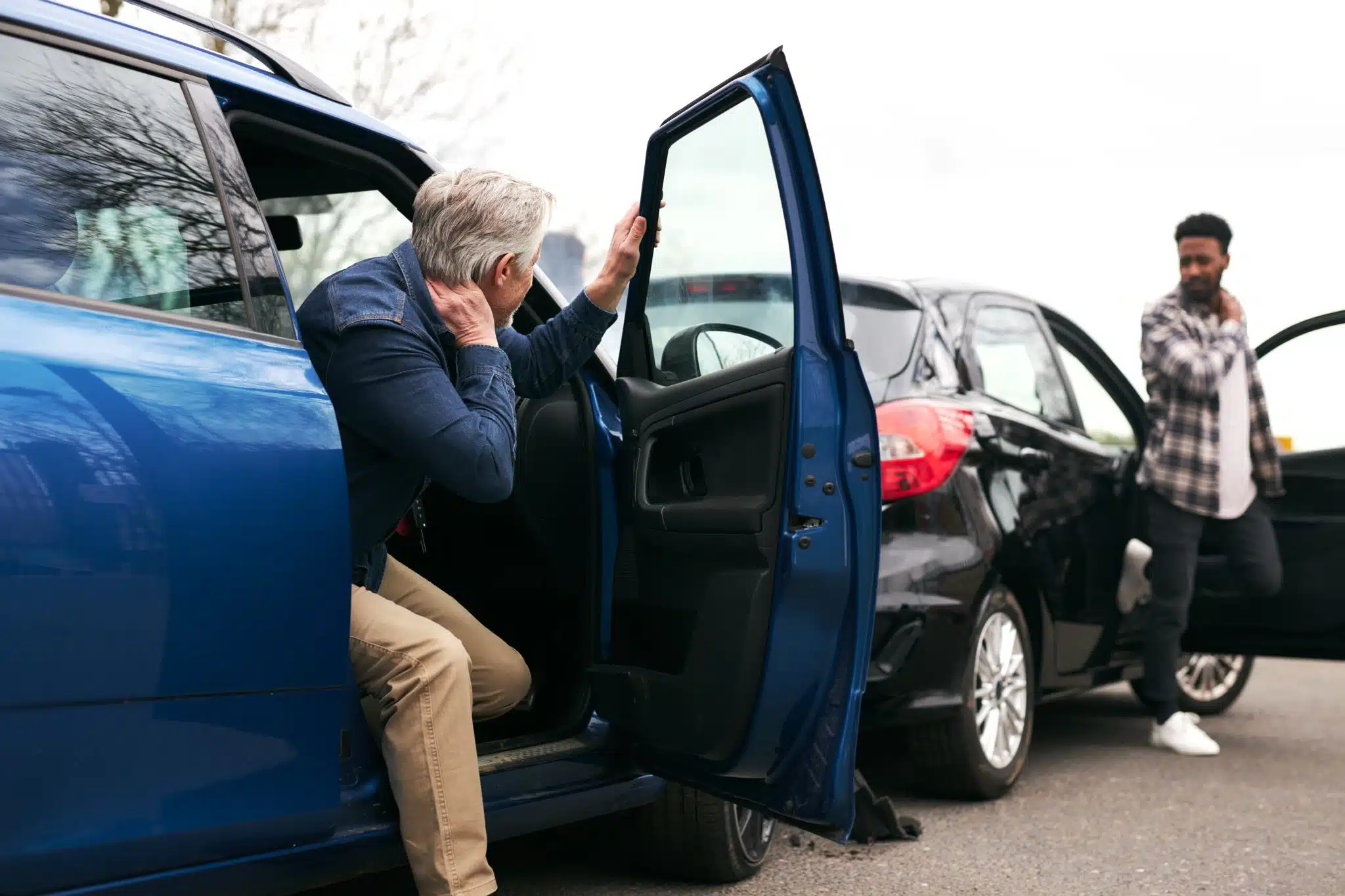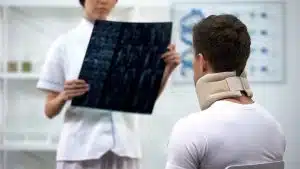
Headrests are designed to reduce the risk of whiplash and other neck injuries during rear-end collisions. They act as a barrier, stopping your head from snapping backward when someone hits your car from behind. This limits the movement of your head and neck, significantly reducing the chance of injury.
While safety is the main goal, headrests do offer some additional perks. They provide support for your head and neck during long drives, helping to maintain proper posture and reduce fatigue. Some luxury vehicles even feature adjustable headrests with massage functions for extra comfort. Remember, though, these are just bonuses—the real value of a headrest lies in its ability to keep you safe.
Despite their purpose, headrests don’t always prevent head and neck injuries in car accidents. In some cases, defective headrests may cause the very injuries they were intended to prevent.
Whatever the case, if you suffered injuries in a car accident someone else caused, or if a faulty headrest hurt you or failed to keep you safe from injury, you may have a claim for compensation. Reach out to a Cherry Hill car accident attorney in your area for a free consultation. They can review your case, advise you of your options, and represent you throughout the process to help you get the compensation you deserve.
Cherry Hill Car Accident Guide
- Headrests Limit Head and Neck Movement During Collisions
- Types of Injuries Headrests Prevent
- Legal Implications of Headrest-Related Injuries
- Proper Headrest Adjustment: A Key to Safety
- Headrest Safety Standards: Ensuring Minimum Protection
- Tips for Ensuring Headrest Safety
- Considering Headrest Features When Purchasing a Vehicle
- Contact an Experienced Car Accident Attorney Today
Headrests Limit Head and Neck Movement During Collisions
In a rear-end collision, your body is thrust forward by the impact. However, your head, being heavier and less supported, tends to lag behind. This creates a whip-like motion that can cause serious neck injuries. A properly positioned headrest prevents this by catching your head before it can snap too far backward.
Headrests Absorb Impact Energy
Headrests aren’t just solid barriers. They’re designed with energy-absorbing materials that help cushion the impact. When your head hits the headrest, these materials compress, spreading out the force of the collision over a larger area and a longer time period. This significantly reduces the stress on your neck and spine.
Proper Positioning a Headrest for Maximum Effectiveness
For a headrest to do its job effectively, it needs to be in the right position. The top of the headrest should be level with the top of your head, and it should be as close to the back of your head as possible—ideally no more than 2-4 inches away. This ensures that your head makes contact with the headrest quickly in a collision, minimizing the whiplash effect.
Types of Injuries Headrests Prevent
Headrests play a crucial role in preventing a range of potentially serious injuries, including.
Whiplash and Neck Strain
Whiplash is perhaps the most well-known injury that headrests help prevent. It occurs when the head is suddenly jerked backward and then forward, straining the soft tissues of the neck. Symptoms can include neck pain and stiffness, headaches, dizziness, and even cognitive issues like memory problems or difficulty concentrating.
While whiplash is often associated with rear-end collisions, it can occur in any type of crash. A properly adjusted headrest can significantly reduce the risk of whiplash by limiting the backward movement of the head.
Cervical Spine Injuries
The cervical spine—the part of your spine in your neck—is particularly vulnerable in car accidents. Without proper support, the forces involved in a collision can damage the vertebrae, discs, or spinal cord in this area. Injuries can range from minor sprains to severe damage resulting in paralysis.
Headrests help protect the cervical spine by reducing the amount of movement in the neck during a crash. This can mean the difference between walking away from an accident and facing life-altering injuries.
Concussions and Other Head Injuries
Concussions are a major risk in car accidents. If your head strikes a hard surface during a collision, it can cause your brain to move within your skull, leading to a concussion or other traumatic brain injury.
By providing a softer surface for your head to contact and limiting its movement, headrests can help reduce the risk of these serious head injuries.
Legal Implications of Headrest-Related Injuries
The role of headrests in preventing injuries isn’t just a matter of personal safety—it also has significant legal implications.
Vehicle Manufacturer Liability
Car manufacturers have a legal obligation to design and produce vehicles that meet certain safety standards, including those related to headrests. If a headrest is defective or improperly designed, and this leads to an injury in an accident, an attorney could hold the manufacturer liable.
For example, if a headrest collapses or detaches during a collision, failing to provide the intended protection, the injured party might have grounds for a product liability claim against the manufacturer.
Importance in Personal Injury Claims
In personal injury cases resulting from car accidents, the presence and proper use of headrests can be a significant factor. If you sustained injuries in an accident where your headrest was missing, damaged, or improperly adjusted, this could strengthen your claim for compensation.
On the flip side, if you weren’t using your headrest correctly (for example, if you had removed it or adjusted it to an ineffective position), the other party’s legal counsel could potentially use this to reduce your compensation by arguing contributory negligence. That is why you must have an attorney represent you to push back on any attempts to place undue blame on you.
Potential for Negligence in Improper Headrest Use or Maintenance
While manufacturers have a responsibility to provide safe headrests, vehicle owners and drivers should use and maintain them properly.
For instance, if you’re involved in an accident while driving a company vehicle with an improperly maintained headrest, and you suffer injuries as a result, your employer could potentially be liable for failing to ensure the vehicle was safe to drive.
Proper Headrest Adjustment: A Key to Safety
Having a headrest isn’t enough—it needs to be properly adjusted to provide maximum protection. Here’s what you need to know:
Height Adjustment Guidelines
The top of your headrest should be level with the top of your head. If it’s too low, it won’t stop your head from going over it in a collision. If it’s too high, it won’t properly support your neck.
Distance from the Back of the Head
Your headrest should be as close to the back of your head as possible, ideally no more than 2-4 inches away. The closer it is, the quicker it can stop your head’s backward movement in a crash.
Common Mistakes in Headrest Positioning
Many people make the mistake of positioning their headrest too low for comfort or pushing it all the way back to avoid messing up their hair. These actions significantly reduce the headrest’s ability to protect you in an accident.
Some people even remove the headrest entirely. That’s not a good idea—not only for your safety but for any legal claims that may arise. You should keep the headrest in place and adjust it properly for maximum effectiveness.
Headrest Safety Standards: Ensuring Minimum Protection
To ensure that all vehicles provide at least a basic level of protection, there are established safety standards for headrests.
Current Safety Requirements for Vehicle Manufacturers
In the United States, the National Highway Traffic Safety Administration (NHTSA) sets the standards for headrest design and performance. These standards specify minimum and maximum heights for headrests, as well as requirements for energy absorption and ability to withstand loading.
For example, front seat headrests must be able to withstand a force of 890 newtons (about 200 pounds) applied in a rearward direction. They must also limit the backward movement of a test dummy’s head to no more than 12 degrees relative to its torso during a simulated rear impact.
Potential Future Improvements in Headrest Design
While current standards have significantly improved vehicle safety, there’s always room for improvement. Researchers and manufacturers are continually working on new designs to make headrests even more effective.
Some potential future improvements include:
- Active headrests that automatically move forward in a crash to reduce the distance the head has to travel.
- Headrests with built-in airbags for additional cushioning.
- Smart systems that adjust the headrest position based on the occupant’s height and seating position.
Tips for Ensuring Headrest Safety
While manufacturers and regulators play a crucial role in headrest safety, there’s a lot you can do as a vehicle owner and driver to maximize your protection.
Regular Inspection and Maintenance
Make it a habit to check your headrests regularly. Look for any signs of damage or wear, such as cracks in the plastic, tears in the fabric, or looseness in the adjustment mechanism. If you notice any issues, get them addressed promptly.
Educating Passengers on Proper Headrest Use
Don’t assume your passengers know how to properly position their headrests. Take a moment to explain the importance of correct headrest positioning and help them adjust their headrests if necessary. This is especially important for children, who may be too short for the standard headrest position.
Considering Headrest Features When Purchasing a Vehicle
When you’re in the market for a new car, don’t overlook the headrests. Look for vehicles with easily adjustable headrests that can accommodate a range of heights. Some advanced features to consider include:
- Active head restraints that move forward in a crash
- Adjustable side wings for better lateral support
- Anti-whiplash designs that are specifically engineered to reduce neck injuries
Remember, a little attention to these often-overlooked safety features could make a big difference if you’re ever in an accident.
Contact an Experienced Car Accident Attorney Today
If you suffered injuries or losses in a car accident, whether due to a headrest failure or any other reason that wasn’t entirely your fault, you may qualify to obtain compensation. To successfully navigate the claims process and recover damages, though, you need an experienced Cherry Hill personal injury lawyer for help.
The Rothenberg Law Firm Accident and Injury Lawyers has fought for the rights of accident victims for more than 50 years. Our experienced team of car accident attorneys understands the complexities of these cases, including the role that safety features like headrests play in preventing or mitigating injuries.
We’re committed to providing personalized, compassionate representation and doing all we can to maximize your financial recovery. To date, we’ve recovered billions of dollars in damages for our clients, and you can trust us to work hard to help you get justice and fair compensation for your injuries.
Don’t let the statute of limitations run out on your claim. Contact the Rothenberg Law Firm LLP today for a free case evaluation. We’ll review the details of your accident, explain your legal options, and help you understand the best path forward.
Also, we work on a contingency fee basis, which means don’t charge anything upfront to handle your claim. We only get paid if we negotiate a fair settlement or secure a favorable award at trial. Under this arrangement, you don’t have to worry about how to pay for an attorney.





